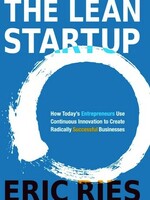Flexible Working - Book Summary
How to Implement Flexibility in the Workplace to Improve Employee and Business Performance
Release Date: March 9, 2024
Book Author: Gemma Dale
Categories: Management & Leadership, Career & Success
Release Date: March 9, 2024
Book Author: Gemma Dale
Categories: Management & Leadership, Career & Success
In this episode of 20 Minute Books, we delve into "Flexible Working" by Gemma Dale, a practical handbook that unravels the intricacies of organizing work beyond the conventional nine-to-five schedule. Published in 2021, this guide sheds light on the diverse working arrangements that have come to define the contemporary work landscape.
Gemma Dale, the author, comes with a wealth of experience as a human-resources expert, the founder of the Work Consultancy, and a renowned lecturer at Liverpool John Moores University Business School, where she covers employment law, organizational behavior, and well-being. Her insights are further enriched by her role as the writer behind the award-winning blog, People Stuff, making her uniquely positioned to guide readers through the shifting paradigms of work.
"Flexible Working" is an essential read for businesses seeking to adopt more agile work arrangements, workers aspiring to break free from the nine-to-five mold, and anyone curious about the evolving future of work. Join us as we explore the key takeaways from Dale's handbook, offering practical advice for both employers and employees keen on embracing the flexibility of modern work environments.
A Field Guide to the Future of Work: Embracing Flexibility
As we navigate through the constantly evolving landscape of the workplace, it's becoming increasingly clear that adhering to a rigid nine-to-five schedule is as antiquated as using a typewriter in the age of laptops and smartphones. The future of work beckons organizations to step into uncharted territories of unconventional scheduling, unlocking the potential for a more dynamic and adaptable workforce.
This narrative invites you on a journey through the vibrant realm of flexible work arrangements, showcasing the multitude of formats at the disposal of modern companies. It delves into the myriad benefits that arise from embracing flexibility, including enhanced employee satisfaction and a notable uplift in productivity.
Through engaging insights and actionable advice, you're equipped with the tools to experiment with flexible working practices within your own organization. Discover the transformative power of breaking free from traditional work norms, and witness how such shifts can propel your business into a future where work is not just a place you go, but an activity seamlessly integrated into the fabric of life.
Dive into these insights to uncover:
- The universally dreaded aspect of conventional jobs.
- The journey of a Swiss insurance powerhouse towards flexibility.
- The revelation that physical presence in the workplace is not the pinnacle of productivity.
Prepare to redefine your perception of work and unleash the full potential of your workforce by embracing the principles of flexible working.
The Win-Win of Flexible Work: Balancing Business Goals and Personal Lives
Imagine a bustling city waking up to the rhythm of diverse lifestyles and work patterns. A dedicated father seamlessly transitions from office work to childcare, embodying the essence of work-life harmony. Elsewhere, a diligent student tailors her workweek to fit in extended study sessions, while a seasoned executive carves out time to explore passions beyond the boardroom. These scenarios aren't snippets from a futuristic novel; they're real-life examples of flexible work practices reshaping the landscape of employment.
The essence of this transformation lies in a simple yet profound truth: adopting flexible work practices benefits both businesses and employees.
Flexible working goes beyond the traditional confines of the nine-to-five, onsite routine, offering a spectrum of arrangements that cater to individual needs and preferences. This flexibility allows for various configurations, such as compressed workweeks, remote working options, or the autonomy to choose one's working hours within the gig economy's dynamic framework.
This concept is not a fleeting trend but a response to evolving workplace demands and technological advancements that enable such versatility. An overwhelming majority of workers, with studies indicating figures as high as 87 percent, express a desire for flexible arrangements, with 35 percent willing to switch jobs to achieve this flexibility.
But what fuels this craving for flexibility? For many, it's the allure of personalizing their work schedules to better accommodate their unique needs and life commitments—be it family, education, or leisure. Research supports this preference, revealing that a mere 16 percent of employees would opt to maintain a traditional nine-to-five routine if given a choice.
The benefits of flexible working extend to employers as well, offering a competitive edge in attracting and retaining top talent. Moreover, when employees are granted autonomy over their schedules, they exhibit higher levels of productivity, engagement, and innovation.
As we venture further into this exploration of flexible work, the question that looms on the horizon is, what implications does this shift hold for the future of the workplace?
Embracing Change: How Flexible Work Is Shaping the Future
Let's embark on a journey through time to understand our relationship with work. Centuries ago, our lives were intricately linked to the rhythms of nature, with work largely defined by agricultural cycles. Fast forward to the Industrial Revolution, and the scenery shifts dramatically to factory settings, establishing the 40-hour workweek as the new standard, dictating a significant part of human existence.
In today's era, the concept of work has transformed yet again, thanks to the digital revolution. Modern workers might find themselves in a bustling cafe, responding to emails, or at a home office conducting meetings via video calls. This evolution underscores a universal truth: as our world undergoes change, so too must our approaches to work.
The message is clear: flexible work is not just a trend; it's the blueprint for the future workplace.
Several forces are steering us toward this future. One notable driver is the changing workforce demographics, blending younger entrants and seasoned professionals not yet ready to step back. This mix brings to the forefront diverse needs and preferences, from schedule flexibility to location independence, necessitating a departure from the one-size-fits-all work model.
Simultaneously, technology and globalization are dismantling traditional workspace boundaries. The Internet's omnipresence enables global collaborations and remote interactions, paving the way for organizations, like Automatic — the powerhouse behind WordPress — to operate without a central office, with employees enjoying the freedom to work from virtually anywhere.
Another compelling trend is the shifting societal expectations towards workplace inclusivity. Flexible work opens doors to continued professional engagement for parents, offering both mothers and fathers the ability to juggle career aspirations with family responsibilities. Furthermore, it heralds a more inclusive era for individuals with disabilities, who can now access employment opportunities previously beyond reach due to physical office constraints or rigid work hours.
But the story doesn't end with fostering inclusivity and adapting to demographic shifts. Flexible work arrangements also promise a host of additional benefits, enhancing business productivity, employee satisfaction, and overall work-life balance. As we delve deeper into the exploration of flexible work, we'll uncover the myriad ways in which it not only matches the current pace of change but also propels us towards a more adaptive, equitable, and thriving future of work.
Reimagining Work: How Flexibility Fuels Well-being and Productivity
When pondering the less savory aspects of our jobs, a few common grievances spring to mind. Perhaps it's the daily grind of a commute, where hours dissolve into the ether amidst traffic jams and packed trains. Or it could be the dreary confines of an office that seems to suck the joy out of work. For others, the relentless barrage of "urgent" emails that encroach upon evenings and weekends might be the last straw.
Workplace dissatisfaction and the path to burnout are laden with a variety of obstacles — some systemic, rooted in the organization's culture, and others more personal. Preventing these issues from hampering productivity is a task many forward-thinking employers are eager to undertake, and one promising strategy lies in the adoption of flexible work practices.
Here lies the crux of our exploration: flexible work practices can be a powerful catalyst for enhancing employee well-being.
In today’s most successful work environments, a premium is placed on fostering team well-being. Creating a workplace where employees feel supported, capable of rest, and valued is critical. Despite its apparent simplicity, many organizations overlook the significance of well-being, leading to environments rife with stress, overexertion, and a palpable sense of being underappreciated.
The dreaded daily commute emerges as a prime culprit of workday woes. Research by the International Working Group indicates that nearly half of all workers peg commuting as the pinnacle of daily displeasure. Introducing telework options, even if just for part of the week, can significantly alleviate this burden, allowing employees to focus their energy on productivity rather than the logistics of getting to and from an office.
Moreover, embracing flexible work conditions can pave the way to a healthier work-life balance. With a third of UK workers struggling to disconnect and missing valuable time with loved ones due to stringent work schedules, the need for change is evident. Organizations willing to offer flexible scheduling and reasonable accommodations for time off are likely to see not only a surge in productivity but a decline in workplace tensions.
Skeptics of flexible work arrangements often voice concerns over potential slacking, conjuring visions of employees shirking responsibilities in the absence of strict oversight. This perspective is rooted in the antiquated "command and control" management model, which presupposes an inherent laziness among workers that necessitates constant surveillance and discipline.
However, this narrative is largely debunked when workers are entrusted with autonomy. Empirical evidence suggests that when given the freedom to manage their own schedules, most individuals are more than capable of self-motivation, debunking the myth of the inherent need for rigid managerial control. As we continue to peel back the layers of flexible work benefits, it becomes increasingly clear that this shift not only elevates employee well-being but also acts as a linchpin for sustaining productivity and satisfaction.
Navigating the Flexible Work Landscape: Bridging Challenges with Innovation
Becci Martin didn't just aim to build a business; she aspired to create a workplace that sparks joy and enthusiasm among her team each day. As the founder of Boo Coaching and Consulting, she sought to marry the company's lofty leadership and achievement goals with a genuinely fulfilling work environment. Achieving this harmony wasn't effortless, but through perseverance and adaptability, Becci established a flexible work model that became a beacon of success.
Central to Boo's approach is the autonomy in work location and scheduling, paired with the commitment to maintain constant communication through digital channels and regular in-person gatherings for planning and alignment. What Boo exemplifies, however, isn't a one-size-fits-all solution but rather a testament to the potential of flexible work when approached with creativity.
This story leads us to an important revelation: barriers to flexible work can be surmounted with effective communication and strategic use of technology.
Despite the mounting evidence in favor of flexible work arrangements, some organizations remain tethered to conventional office hours, their hesitation often steeped in logistical concerns or ingrained cultural norms.
A significant cultural hurdle is the perpetuation of presenteeism — the overemphasis on physical attendance as a proxy for productivity. This mindset not only undermines the essence of flexible work but also fosters an environment where appearances trump actual output, leading to counterproductive practices like unnecessary overtime and meeting attendance. Surprisingly, 32 percent of employees perceive flexible working as a potential impediment to career advancement.
Overcoming these challenges necessitates a dual approach: refining communication strategies and leveraging technology. Educating leadership about the benefits and strategic implementation of flexible, or "agile," work arrangements can shift perceptions from skepticism to endorsement.
Instituting specialized training for managers on overseeing remote or flexibly scheduled teams, coupled with the deployment of cloud-based solutions, can create a transparent and cohesive operational environment. These technologies enable seamless collaboration and task management, ensuring that contributions are visible and valued. Regular video conferencing further maintains the connection between remote team members and their office-bound colleagues, fostering a sense of community.
Experimentation with various communication tools and techniques is key. By embracing flexibility as an operational norm and not an exception, organizations can transition smoothly into a future where work is defined not by location or hours but by achievement and satisfaction.
Flexibility for All: Transforming Any Workspace with Six Fundamental Steps
Envision the Zurich Insurance Group, nestled amidst the picturesque Swiss Alps, a testament to stability and tradition with a legacy spanning over 140 years. This colossus of the insurance world, home to more than 55,000 employees globally, recently embarked on a transformative journey—one that challenged the very fabric of traditional work paradigms. The venture? Adopting flexible work arrangements. Initially trialed with a select group, the overwhelming success of these experiments led to a broader implementation, now encompassing over 72 percent of its workforce. If such a venerated institution can redefine its work culture to embrace flexibility, then the door opens for all organizations to follow suit.
The essence of this transformation lies in adhering to six simple yet profound principles, making the flexible workplace an attainable reality for any company.
The first principle underscores the universality of flexibility—making it the standard rather than the exception. This approach democratizes workplace flexibility, extending its benefits across all levels from the top brass to those just stepping onto the career ladder.
Secondly, it's crucial to recognize the diverse spectrum of flexibility. While remote work fits seamlessly into fields like IT, marketing, or finance, not all professions lend themselves to such arrangements. For roles tethered to physical presence—be it healthcare, hospitality, or construction—alternative flexibility modalities, including staggered hours or tailored scheduling, can still provide meaningful work-life balance adjustments.
The journey continues with fostering a high-trust environment, the third principle. A workplace where mutual respect and integrity pave the way for employees to thrive without the looming shadow of constant surveillance marks a significant cultural shift necessary for flexible work to flourish.
Equally important is the fourth principle: equipping managers with the tools and knowledge to navigate the nuances of flexible work arrangements. Specialized training focused on remote leadership skills, such as tracking team progress and engaging workers from afar, is paramount in adapting to these new dynamics without devolving into micromanagement.
Fifth, the establishment of clear, comprehensive policies around flexible work is essential. These guidelines serve as the bedrock for consistency, ensuring all employees understand their options, rights, and responsibilities within the flexible work framework.
Lastly, invest in technology. Moving to flexible work arrangements often necessitates an update in internal systems and access to modern hardware and software. This technological foundation is not a luxury but a necessity, enabling seamless transitions and supporting the day-to-day operations of a dispersed workforce.
By embracing these six principles, any organization—no matter its size, industry, or legacy—can navigate the path toward a more flexible, inclusive, and adaptive workplace.
Strategic Steps to a Seamless Flexible Work Transition
The allure of flexible work is undeniable. Visions of content employees efficiently navigating their work and personal lives, devoid of the morning traffic jams, paint a compelling picture of what could be. It's no wonder that the temptation to leap into flexible working arrangements might have you ready to initiate changes as soon as possible. However, a successful transition demands more than mere enthusiasm—it requires thoughtful and strategic planning.
Embarking on the journey to flexible working without a well-thought-out plan is akin to setting sail without a map. The intricacies involved in shifting from decades-old traditional work systems to a more fluid model necessitate a careful, methodical approach.
Here's the essence of navigating this transition smoothly: Avoid potential pitfalls by meticulously planning your move towards flexible working.
The preliminary step involves conducting a thorough assessment of your organization's readiness for flexible work. This includes understanding prevailing attitudes among staff, the objectives management aims to achieve with this change, and identifying the resources at your disposal for facilitating the shift.
With a clear grasp of your starting point and desired outcomes, the next phase is to craft a detailed strategy for transition. This involves setting specific, measurable, achievable, realistic, and time-bound (SMART) goals. For instance, you might set a goal to have a certain percentage of your workforce operating remotely within a set timeframe.
Caution is key in the initial stages. Opting to pilot flexible working arrangements within a singular department or role enables you to hone your approach and address any teething problems before a full-scale rollout. During these trials, it's crucial to collect data on various metrics such as productivity levels, absenteeism, costs, and to gather candid feedback from participating employees. Remember, at the heart of shifting to flexible working is the aim to enhance employee well-being.
Communication plays a pivotal role throughout the entire process. Abrupt changes can lead to unease and resistance. To cultivate a culture of inclusivity and adaptability, it's vital to keep all stakeholders informed with regular updates on the progress of the transition, including a clear timeline of forthcoming changes. Engaging in open dialogue ensures that the workplace community remains cohesive during this period of transformation.
By adhering to these strategic steps, you can steer your organization towards a flexible working model that not only boosts productivity and employee satisfaction but also navigates the potential challenges that such significant changes can bring.
The Cornerstone of Flexibility: Crafting Clear Policies for a Smooth Operation
Let's dive into a topic that, at first blush, might seem as appealing as a mandatory fitness boot camp. However, just like those lung-busting squats and burpees, it's something that, despite its lack of glamour, is fundamentally necessary for health and efficiency. I'm talking about the backbone of any well-oiled organization: the not-so-thrilling world of paperwork, rules, and regulations.
Navigating a company without a set of clear written policies is akin to embarking on an architectural project sans blueprints; a risky endeavor that may soon see the whole structure teetering on the brink. This analogy rings especially true for organizations seeking to embrace a flexible work paradigm, where the need for solid, unequivocal guidelines cannot be overstated.
Here's why solid policies are the bedrock of successful flexible work environments:
Flexible work thrives on having crystal-clear policies in place.
The essence of these written rules is alignment. Without them, misalignments between management's expectations, HR protocols, and employee understanding can lead to conflict and confusion. Consolidating company policies into a single, accessible compendium ensures equitable knowledge distribution among all parties involved, setting a common ground from which to operate.
So, what should these indispensable documents encompass? Essentially, anything and everything related to how the organization runs. Detailed policies covering employee scheduling, performance assessment criteria, the ins and outs of promotions, transfers, leave requests, and more, should be meticulously documented. Even aspects that might appear self-explanatory or ones governed by national legislation benefit from being clearly reiterated in company-specific terms.
Naturally, certain policies hold particular significance for flexible work arrangements. Examples include defining obligatory check-in times or specifying days when everyone must be available for meetings. Guidelines on communication are also pivotal — delineating acceptable times for work-related calls or preferred channels for daily check-ins can prevent work from bleeding into personal time. Policies tailored to life events like parenting or illness provide further clarity and support for employees navigating these experiences.
While the onus of drafting and periodically revisiting these rules typically falls on HR, it's a task that calls for collective wisdom. Soliciting input from all levels within the organization ensures that the policies in question are not only equitable but also genuinely reflective of the workforce they are designed to guide. In keeping with the spirit of accessibility, it's equally important to steer clear of overly technical jargon. The efficacy of a policy hinges not only on its existence but on its understandability.
In the end, the vibrant tapestry of a flexible work culture is held together by the threads of clearly articulated policies, enabling both the organization and its employees to navigate the evolving landscape of work with confidence and clarity.
Ensuring a Smooth Sail Into Flexible Work by Meticulous Preparation
Picture this: you're comfortably settled into your role as a programmer, marketer, or graphic designer, and then an unexpected email lands in your inbox. Its subject screams in caps, “FLEXIBLE WORK BEGINS TOMORROW!” Feelings of bewilderment, perhaps mixed with a dash of apprehension, might initially surface. But, in an ideal scenario architected by thoughtful planning, this news is met with nothing short of enthusiasm and a clear vision of what lies ahead.
This scenario, while ideal, doesn't materialize out of thin air.
The cornerstone of a successful flexible work rollout is robust, preemptive planning, ensuring that the transition is celebrated rather than feared.
Implementing a flexible work program isn’t merely a switch to be flipped. Instead, it marks a significant evolution in how an organization operates, promising enhanced autonomy and an improved work-life balance for employees. To navigate this transition seamlessly, the emphasis must be placed on comprehensive preparation and open lines of communication.
Every employee should be well-informed about the impending changes, understanding how this shift impacts their daily work life. For those transitioning to flexible schedules, clarity on how to manage and communicate their availability becomes paramount. Remote workers should not only be tech-prepared but also align their expectations with the defined scope of flexibility.
Diversity in communication strategies is key. Providing access to information through a digital handbook or an online hub ensures answers are just a few clicks away. Organizing informational gatherings before the launch can foster a supportive environment where queries can be addressed, and concerns, allayed. Embrace the possibility of skepticism; be equipped with constructive responses to any critique.
The conversation doesn't end with the rollout. Post-launch, actively seeking feedback will illuminate areas of success and pinpoint where adjustments are needed. Encouraging a community forum where employees can share insights, offer support, and exchange best practices can significantly enhance the collective experience of flexible work.
Highlighting success stories serves not only as a morale booster but also as tangible proof of the benefits brought forth by this change. Showcasing these achievements illuminates the positive outcomes and reinforces the value of the transition.
By taking these proactive steps, organizations can ensure that the move towards a flexible work model isn’t just smooth but also universally embraced, transforming potential trepidation into collective optimism and laying the groundwork for a dynamic, adaptable, and happier workforce.
Embracing the Future: The Power of Workplace Flexibility
In an era where the traditional confines of the office are increasingly viewed as a vestige of the past, a significant shift is underway. The conventional paradigm of onsite, nine-to-five schedules no longer holds the universal appeal it once did. Instead, evidence is mounting in support of a more flexible approach to work — one that champions autonomy, supports work-life balance, and fosters job satisfaction.
The crux of the matter lies in breaking free from the entrenched norms that dictate staff must be physically present in the office for a standard workweek. The advantages of this transition are manifold, encompassing enhanced productivity, deeper levels of employee engagement, and overall heightened job fulfillment. To navigate this transformation towards flexible working effectively, it's crucial to first identify the modalities of flexibility that align with your organizational objectives.
The journey to integrating workplace flexibility is collaborative, necessitating open channels of communication and concerted efforts among all parties involved. Developing a pragmatic, inclusive plan that garners broad support paves the way for a smooth implementation. By embracing the principles of flexible work, companies not only adapt to the evolving landscape of the modern workforce but also unlock the potential to thrive in today's dynamic business environment.




